What’s happening in the garden this week: Oct. 6-12
Bringing down the curtain on the tomatoes (finally), putting pine needles to work
Good-bye tomatoes
We’ve had a gorgeous run of weather, with bright sun and temperatures in the high 50s to low 60s during the day. The good weather provided an opportunity to pull down the tomato vines that have been sprawling across the cattle panel fencing since June. We’ll get a frost soon enough and good days to work in the garden will be sparse. The tomatoes have run their course for 2024. It was a good year. I harvested half a bushel of green tomatoes, enough for fried green tomatoes and maybe green tomato salsa or chutney. We’ll see how ambitious we are! There are still plenty of tomatoes ripening on the counter in the kitchen. The straw bales performed superbly as the planting medium for tomato vines this summer, so I’m almost certain I’ll use this method again next year. [Here’s the piece I wrote about straw bale gardening back in May.] Although we had our share of air-borne diseases on the leaves in the second half of the season it didn’t affect the quality of the tomatoes or their size. I grew nine varieties and, as I do every year, have been jotting down notes on how each performed to help jog my memory when I decide which varieties to plant next spring.
Strawberry bed
Back in April, I planted 15 tiny bare root strawberry plants I purchased from Johnny’s Select Seeds in Maine. The mother plants plants grew and spread all summer long, becoming a dense mass but also sending out shoots well beyond the confines of the strawberry bed. Their offspring had planted themselves in the adjoining path and moved onward into the asparagus patch. With winter approaching, it was time to get things under control. To neaten things up, I dug out more than 50 small plants that were connected back to the original 15 and gave them to a neighbor who wants to start a strawberry bed of her own. I hope it stays warm long enough for her to get them in the ground, watered and established before the ground freezes. I’ll cover out strawberry bed with straw and leaves in the coming weeks to protect the plants over the winter. I’ll rake the mulch off next spring, when hopefully we’ll get berries.
Blueberries and pine needles
We have a stand of big white pines at the edge of our field leading up into the woods and they’ve been dropping copious amounts of pine needles. The smell of fresh pine on the ground is intoxicating when you walk underneath them. I raked several barrels full of needles and spread them about three inches deep on the blueberry bed. It’s a great winter mulch and, long-term, could help keep the acidity level of the soil high, which is what blueberries like. I’m still watering the blueberries regularly, giving them a deep soaking once a week. With the thick pine mulch down, that’s about it for the blueberries until next spring.
Leaf time
The leaves are starting to fall from the trees in earnest as well, which means it’s time to get the leaf blower, rake and lawn mower out. I formed several large piles this week and ran the lawn mower over them, collecting the chopped up leaves and dumping them into large storage containers near the compost bins. I’ll add them to compost in the months ahead. I’ll also continue to mow the dropped leaves to spread them onto the perennial beds. They make a great mulch. They protect the plants while they decompose, adding to the health of the soil.
Flowers in the garden
I’m struck by how well some of the flowers I stuck into the vegetable beds over the summer are doing as we move into fall. The marigolds are unbelievably large and filled with color, attracting those bees that are still hanging around. So are the nasturtiums and sweet alyssum. Some zinnias are hanging in there as well. Here are some photos:
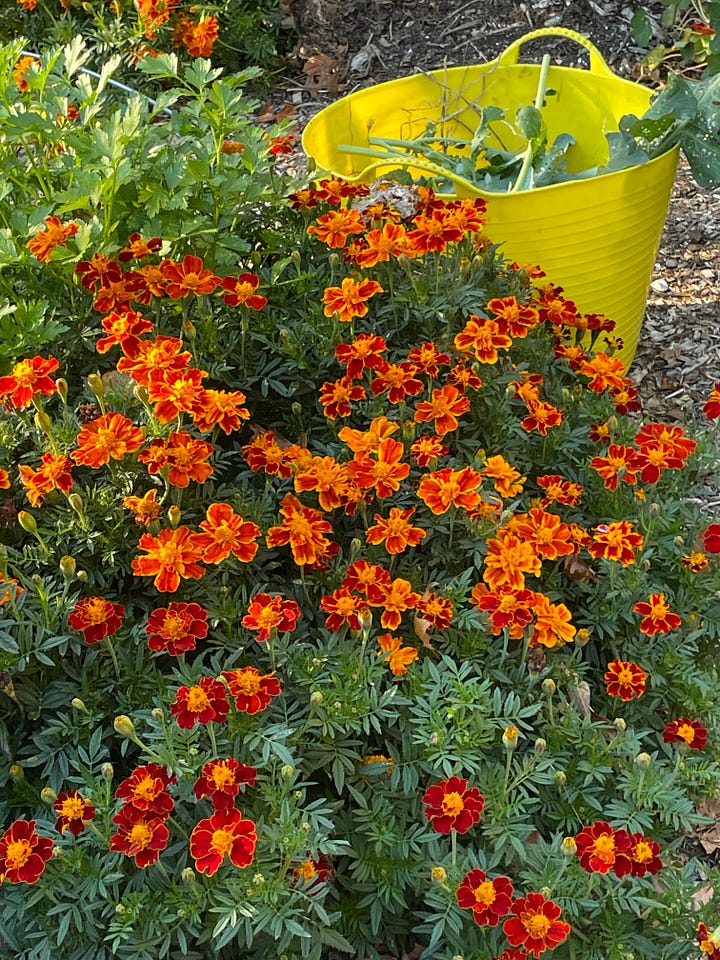
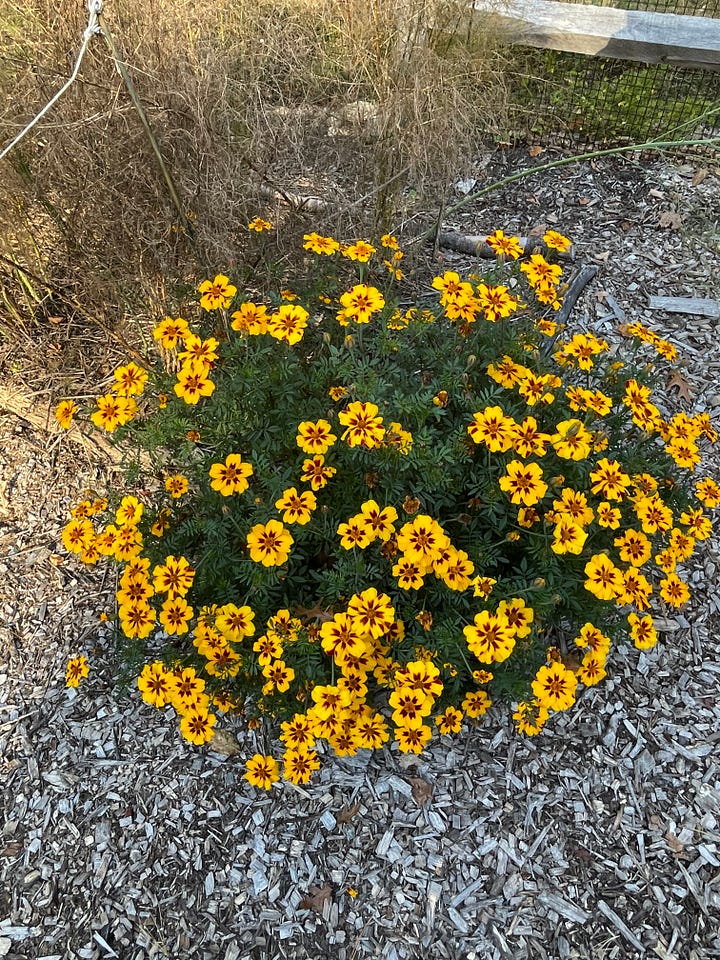
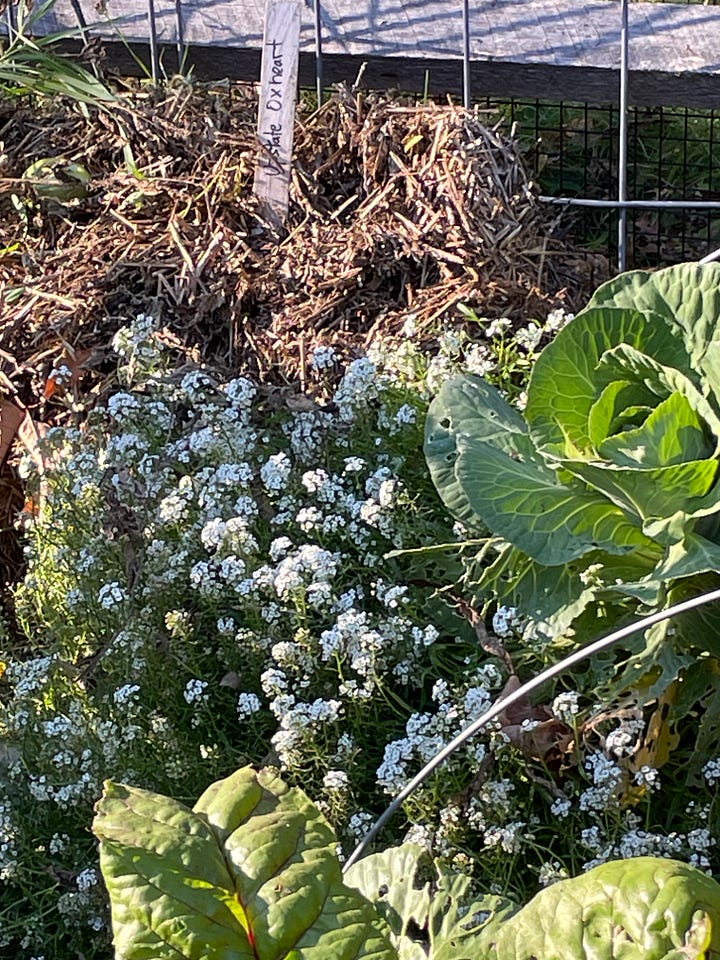
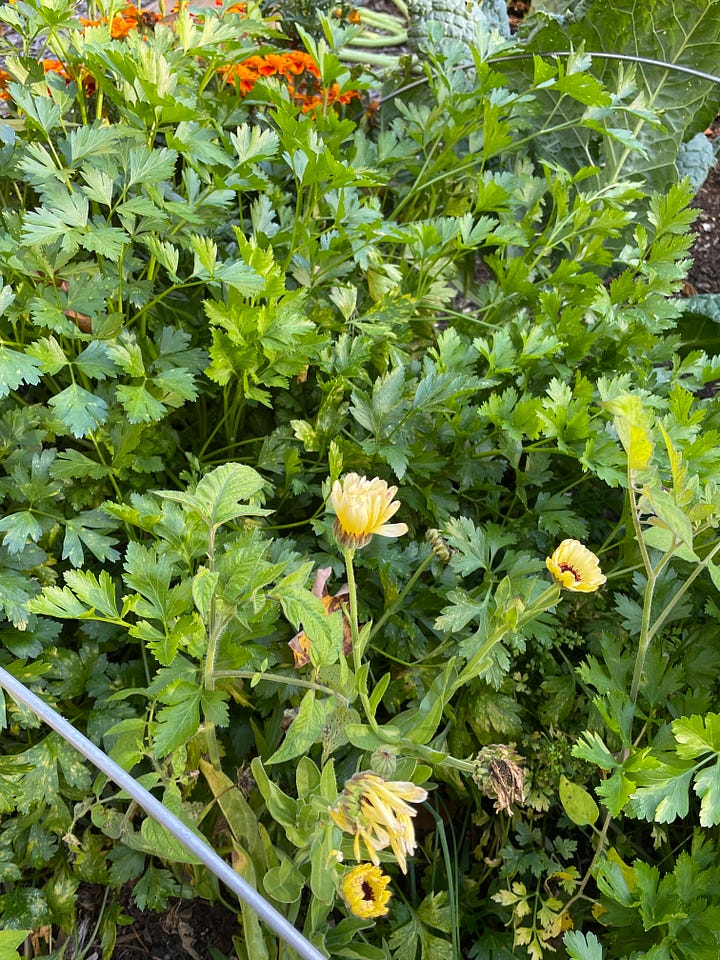
Compost update
For anyone who read my piece on compost this week, you might be interested to know that the temperature on the newly formed pile has continued to rise. It was 58 degrees inside the pile when I formed it, 85 degrees the next day, the day I wrote about it. Yesterday it was up to 120 degrees inside the pile. That’s a good level, indicating the plant materials are decomposing at a high rate. If it rises another 10 degrees or more, it will be hot enough to kill many weed seeds, which is always a plus.
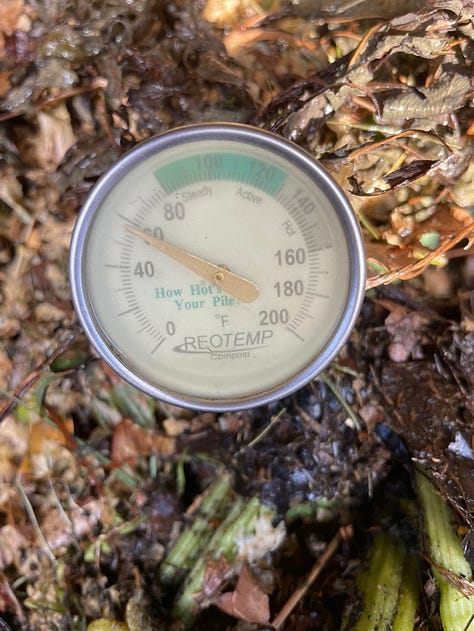

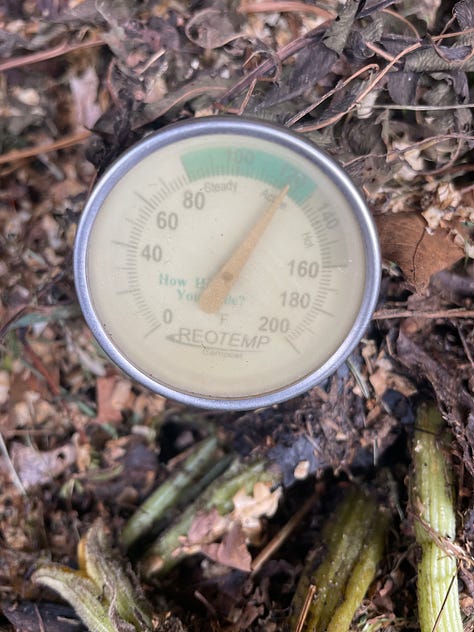




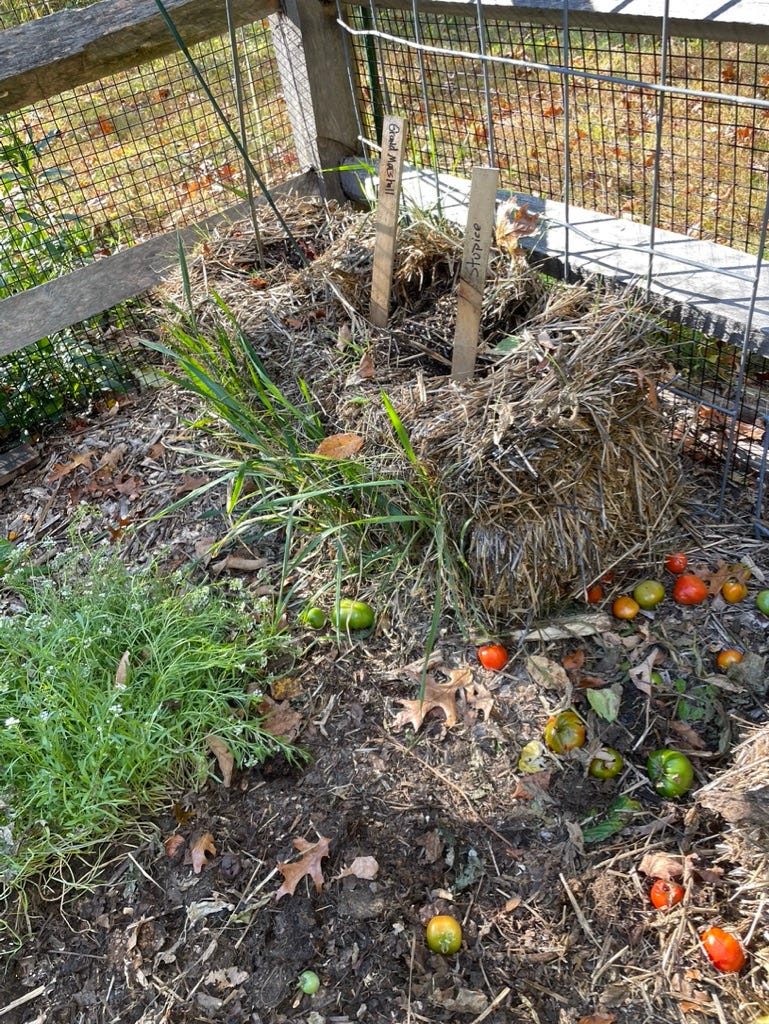
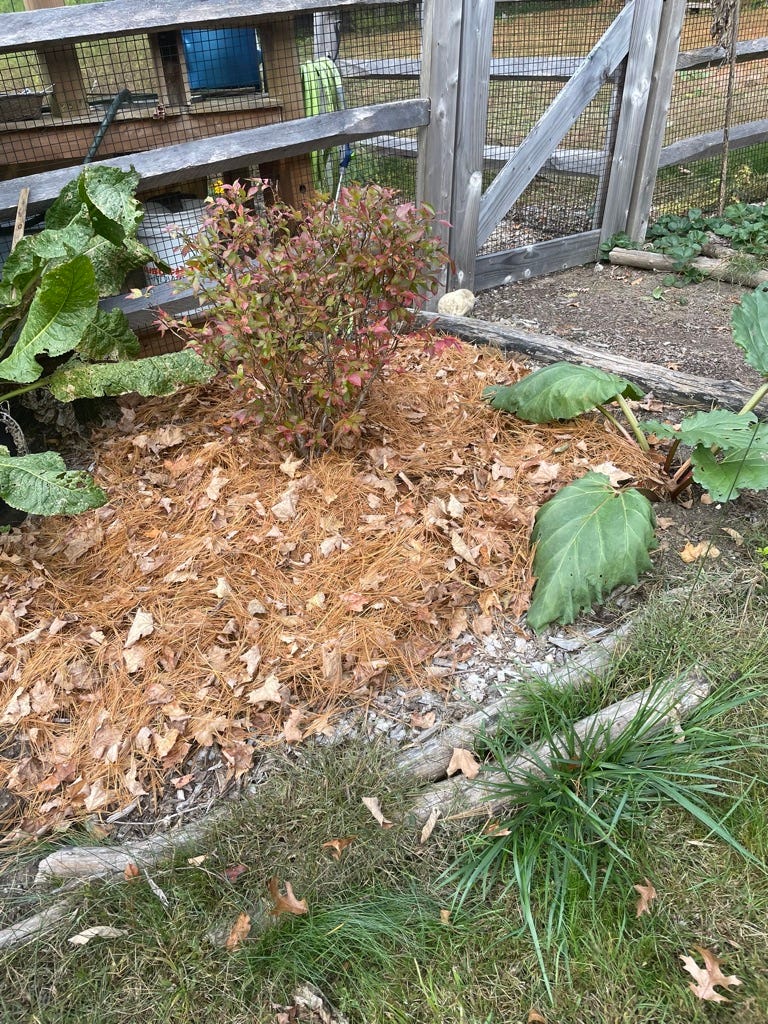
Congrats on a very successful season Matt! To use up those green tomatoes, here is a great pork chili verde recipe I made last year: https://www.lifesambrosia.com/chili-verde-recipe/. Just substitute green tomatoes for the tomatillos. You can also make it with boneless chicken thighs, and it freezes well. I also usually make a batch of green tomato relish to go with hot dogs, half smokes, etc. during the football and hockey seasons. There are plenty of recipes out there, regular or sweet, as you prefer.